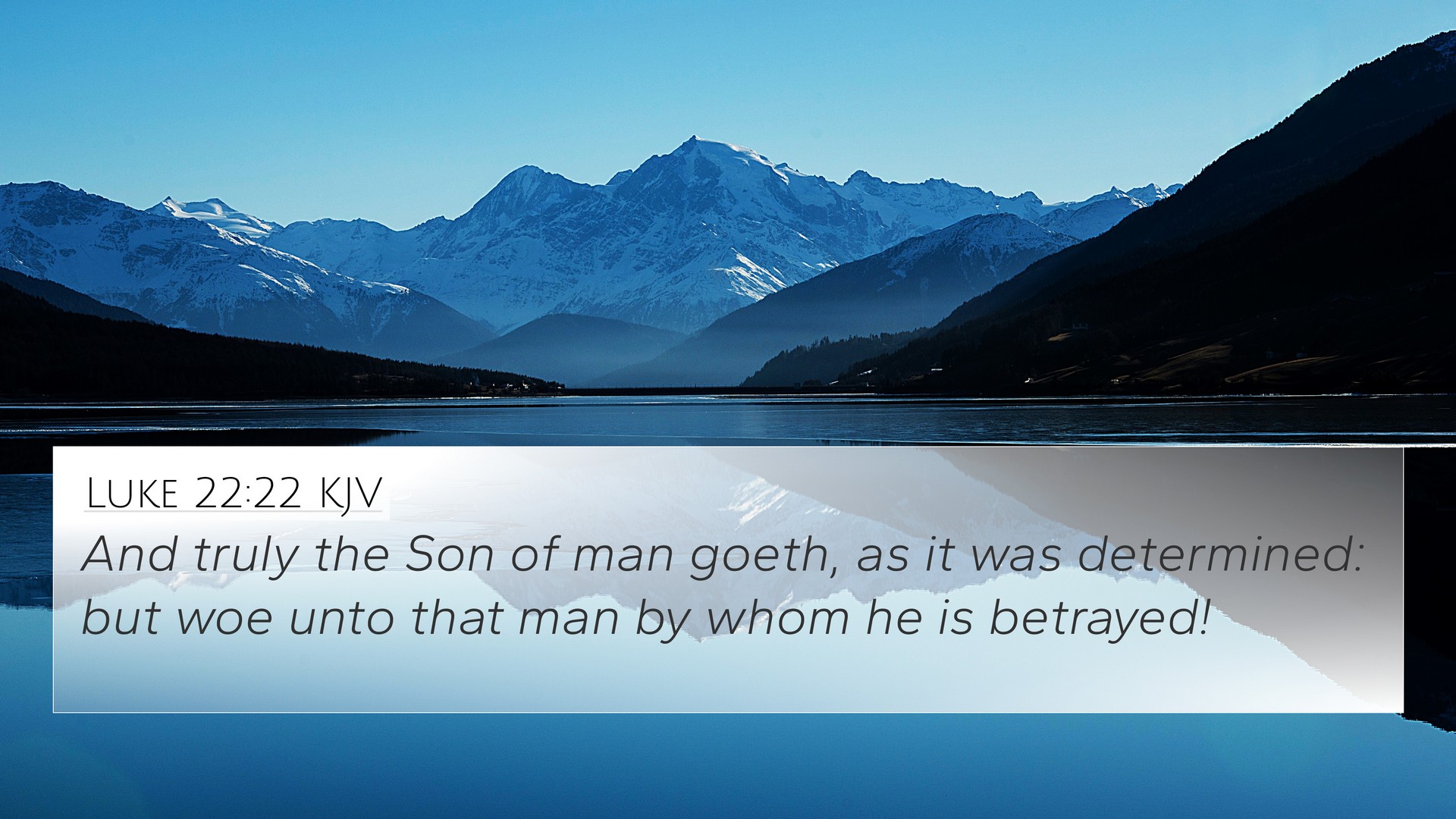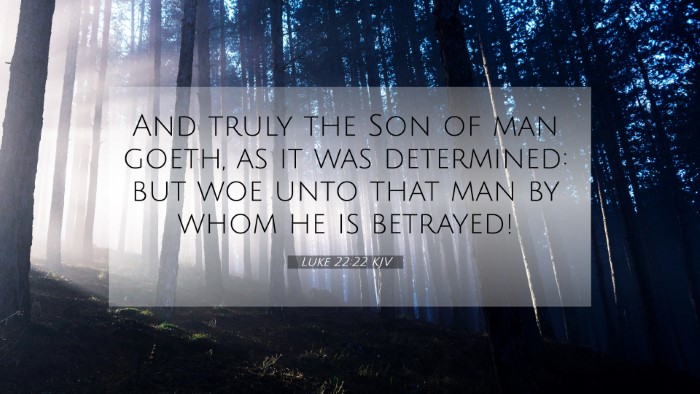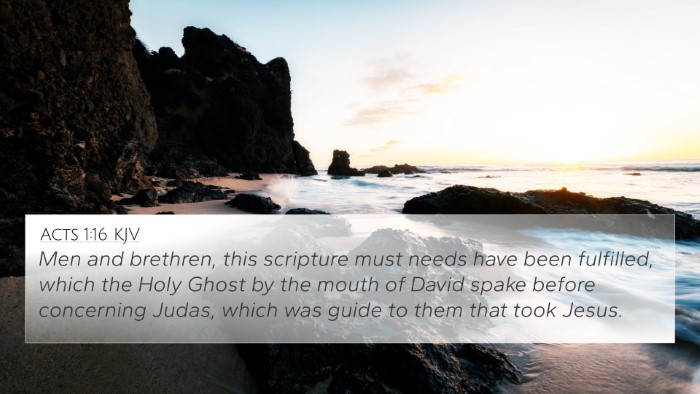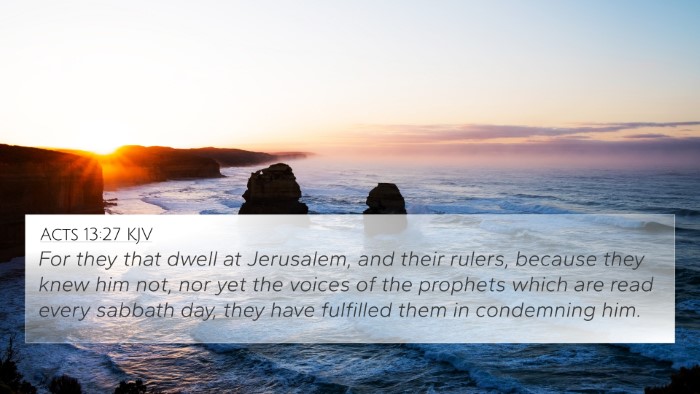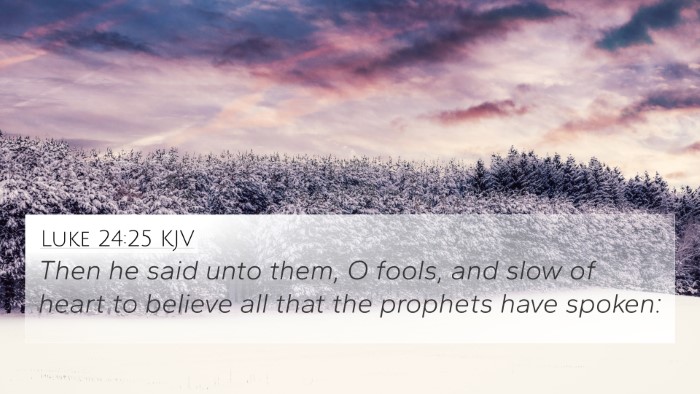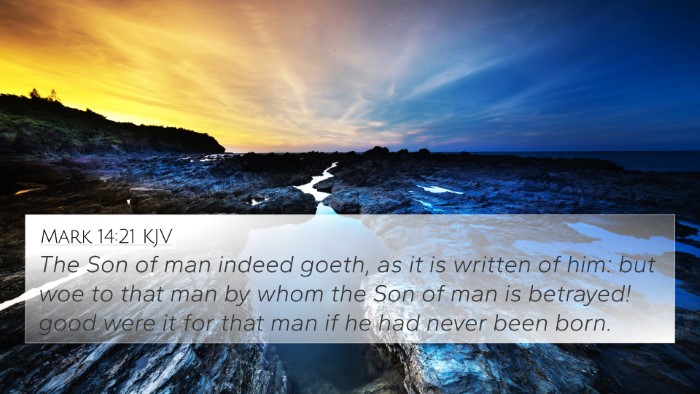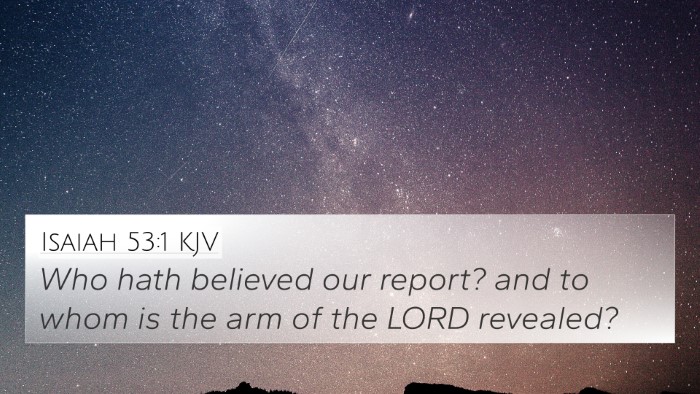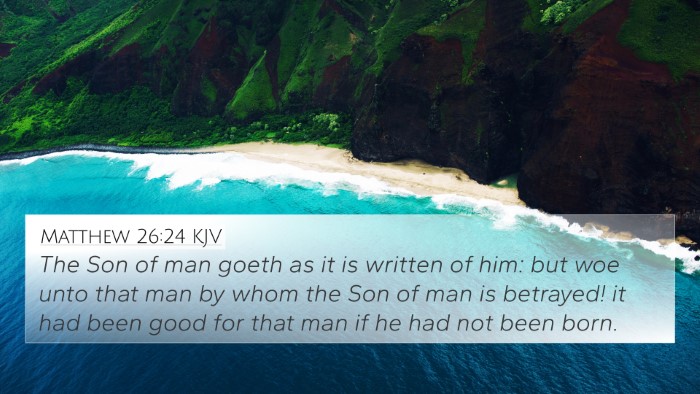Understanding Luke 22:22
Verse: "For indeed, the Son of Man is going as it has been determined; but woe to that man by whom He is betrayed!"
This verse occurs during the Last Supper, where Jesus communicates the inevitability of His betrayal and the grave consequences for the betrayer. The deeper meanings can be explored through various public domain commentaries.
Matthew Henry's Commentary Insights
Matthew Henry emphasizes the sense of divine necessity in the statement, "as it has been determined." This reflects God's sovereign plan and how Jesus' death was foretold in the Scriptures. Henry highlights how the betrayal was not an impetus of chance but rather part of the divine scheme.
Albert Barnes' Commentary Insights
Albert Barnes points out the woe pronounced on Judas, the betrayer. This indicates a severe moral warning against betrayal and treachery. Barnes highlights the gravity of Judas' sin, noting that he would have to bear the consequences of his actions eternally. He also relates this event to the prophecies from the Old Testament that reference betrayal.
Adam Clarke's Commentary Insights
Adam Clarke elaborates on the phrase "the Son of Man is going," interpreting it as Jesus' acceptance of His role in fulfilling the prophecies about the Messiah's suffering. Clarke also highlights the implication of the betrayal as a human action contrary to divine purpose, showcasing the tragic elements of free will intertwined with God's will.
Cross-References and Related Verses
Luke 22:22 has various thematic connections and cross-references that can enhance understanding:
- Psalm 41:9: Prophesies betrayal by a close friend.
- John 13:18-21: Jesus identifies His betrayer during the supper.
- Matthew 26:24: "It would have been better for that man if he had not been born."
- Mark 14:21: The Son of Man goes as it is written of Him, but woe to the one who betrays Him.
- Zachariah 11:12-13: References the thirty pieces of silver, foreshadowing Judas' betrayal.
- Acts 1:16-20: Peter speaks of Judas' actions as a fulfillment of Scripture.
- 1 Corinthians 11:23: Paul recounts the institution of the Lord's Supper, tying back to the Last Supper’s events.
- Isaiah 53:3: Foreseeing the rejection of Christ by His own people.
- Luke 22:1-6: Context of the plotting nature of Judas' betrayal.
- Revelation 13:8: The Lamb slain from the foundation of the world, alluding to the preordained plan of God.
Connecting Themes and Insights
Luke 22:22 serves as a critical junction in understanding the culmination of Jesus' redemptive mission. The themes of betrayal, divine sovereignty, and human agency are interwoven throughout the Bible. By examining these connections, readers can comprehend the multifaceted nature of God's plan.
Scriptural Cross-Referencing: Tools for Bible cross-referencing reveal how various Scriptures converse with each other. By leveraging a Bible concordance or a cross-reference Bible study, one can uncover the intricate relationships between verses like Matthew 27:3-10 that discuss Judas’ subsequent remorse, and John 18:5-6, emphasizing the powerful declaration of Jesus' identity amidst betrayal.
Sermon Preparation and Study Methods
For those engaged in Bible study, understanding these connections through a comprehensive Bible cross-reference system aids in delivering effective sermons or discussions. Utilizing resources such as Bible reference guides and examining cross-referenced themes enriches the study of particular passages by revealing continuity and developing profound insights into scripture.
Final Thoughts
Luke 22:22 poignantly encapsulates the tension between divine foreknowledge and human choice, acting as a reminder of the weight of betrayal and the unrelenting nature of God's redemptive purpose through Christ. Engaging with this verse through various Bible verse cross-references and understanding its interconnectedness with other scripture can deepen a believer's understanding of the Gospel narrative.
